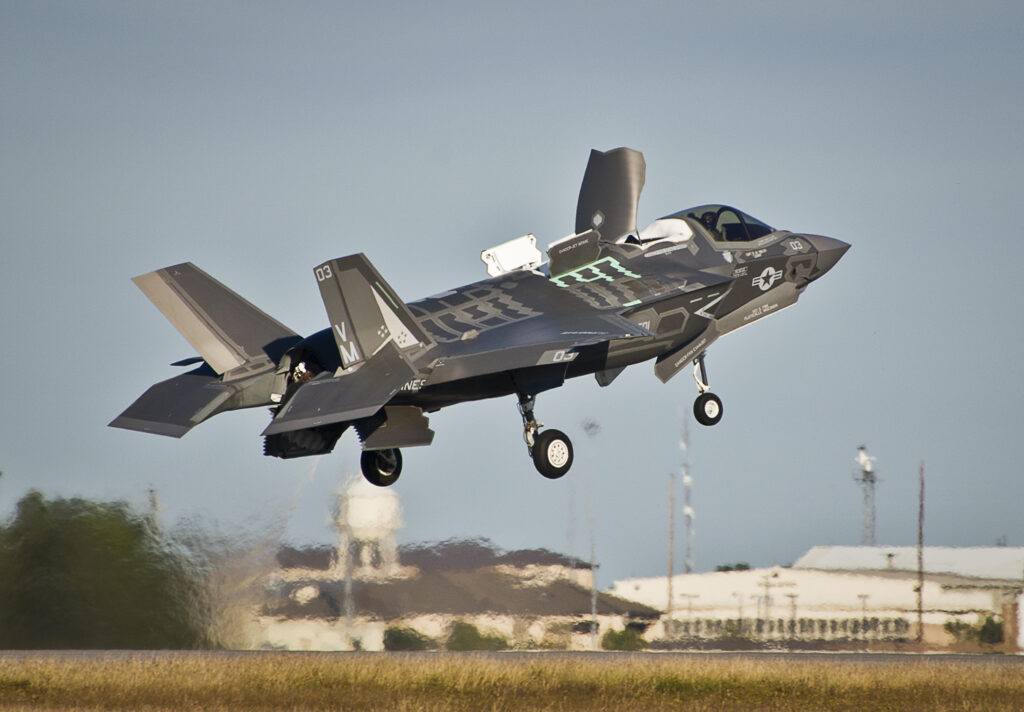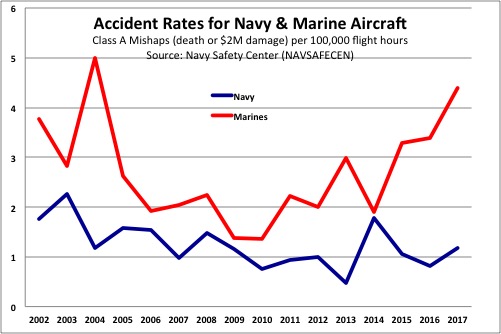Marine Air Needs FY18 Budget To Recover From ‘Horrible Year’: Commandant
Posted on

Marine F-18 Hornet undergoing maintenance
CENTER FOR STRATEGIC & INTERNATIONAL STUDIES: Marine Corps aviation is recovering from “a horrible year” of “horrific” accidents that killed 20 Marines, the Commandant said here yesterday. But, Gen. Robert Neller said, that progress is at risk unless Congress — which just passed a short-term spending bill to end the government shutdown — can actually enact a full-year budget to fund repairs, spare parts, new planes, and training.

General Robert Neller
Things are getting better, Neller said. Yes, there was a recent spate of “precautionary landings” in Okinawa, where, in three separate incidents, Marine helicopters set down urgently — one on private property, one on a beach — after malfunction lights went off. There was also a case when a window fell off a helicopter and landed near a playground, slightly injuring a child. The incidents outraged Okinawan leaders and prompted an apology from Defense Secretary Jim Mattis. But Neller looked on the bright side this morning: “I’m glad there were precautionary landings because nobody got hurt and we didn’t lose any airplanes” — in stark contrast to 2017.
“We had a horrible year last year,” Neller said bluntly. “We had twelve Class As” — aviation accidents involving loss of life and/or $2 million in damage — “and some of them were horrific. The majority of them they were not a result of the materiel condition of the airplane — and I’m just going to leave them at that. Flying is a high risk thing, but that doesn’t meant the people that were involved in this, that they were where we needed them to be as far as (flying) hours and (training) time.”
That’s getting better, Neller said. The Marine Corps-wide average has risen from a bit over 11 flying hours per pilot per month to “just under 16,” he said, but “we know we’ve got to get more hours…..We know we’ve got to fly more.”
What the Commandant is hinting at here: At least some of the Marine Corps pilots who went down last year just hadn’t gotten enough training, raising the risk of costly or even fatal mistakes.

Does not include foreign personnel killed aboard US aircraft.
Why were the pilots undertrained? Three mutually reinforcing factors, all of which Neller is trying to address but needs Congress’s help with:
- Mostly immediately, training has been disrupted or cut back as a direct result of budget dysfunction: Congress has consistently failed to pass proper spending bills on time, leading to short-term Continuing Resolutions that limit spending for the first weeks or months of the fiscal year.
- Maintenance and spare parts to keep aircraft flight-worthy have also been disrupted and cut back. The fewer aircraft are working, the fewer are available to train, and the fewer hours pilots get. Last year, 74 percent of Marine Corps strike fighters were out of service for one reason or another at any given time (and 64 percent of the Navy’s).
- The most fundamental problem is a lot of the Marine Corps’ aircraft are just old, which make it harder to keep them in working order. F-18 Hornet fighters in particular average over 20 years old. That aging fleet is in part the result of Marine Corps leaders deciding in the 1990s to wait to replace planes until the F-35B Joint Strike Fighter was available — but now the F-35B is here, the Marines need a budget to actually buy it.

F-35B in hover mode
Budget Troubles
“We need a budget to buy new airplanes. We need new iron,” Gen. Neller said. With the Joint Strike Fighters they already have, the Marines have converted three fighter squadrons from Hornets to F-35Bs, Neller said. The F-18s from those squadrons are now excess: The older ones can be stripped for parts to repair other aircraft, the newer ones can go to other F-18 squadrons to replace their oldest planes.
“In fact right now, we’ve got too many Hornets,” Neller said. “We’ve got to get rid of them.” The details of their disposition are still being worked out, he said.
But it’s hard to do this kind of long-term planning under short-term spending bills. A Continuing Resolution like the one passed last week basically says “keep doing what you were doing last year until (this date) while we figure this out.” Existing programs can’t ramp up, new programs can’t start, and for that matter wasteful programs can’t be cut. There’s also the very real possibility of a government shutdown when a CR runs out, if Congress can’t agree to extend it or to pass a proper spending bill.
“The biggest problem is the uncertainty that hangs over you like a cloud,” Neller said. “It changes behavior.” Uncertainty about the budget leads program managers, unit commanders, and other officials to hold back on spending money or signing contracts early in the year, while they’re still under CRs. Then, when a proper appropriations bill is finally passed, everyone rushes to spend their money and pack a year’s worth of projects into the remaining months. Last year, Neller said, once the appropriations passed, the Marines had to scramble to spend an extra $30 million a day — hardly the efficient stewardship of taxpayer money that Congress claims to want.

This annual “Slow down! Hurry up!” makes it hard to plan training, do maintenance, or build new airplanes. It’s especially hard on small businesses that make rare, specialized spare parts, Neller said, because without predictable cash flow, they can’t invest and, often, can’t even make payroll.
By contrast, Neller said, the ideal is to do Multi-Year Procurement (MYP) contracts, in which the government commits to two or more years of purchases in return for a reduced price. But making MYPs requires Congressional permission in the best of times — since Congress budgets year by year — and budgetary chaos can force the military to break the MYPs it already has.
“We need to have a budget. I’m hopeful and it would be great (if) they could do one for ’18 and ’19 together,” Neller said. It wasn’t clear if he was referring to a budget deal like 2016’s, which set new Budget Control Act caps for a two-year period, or to Congress actually passing a budget that covered two years of spending, which has been proposed but never done.
What about the budget plan for next year, which will be rolled out in February? “FY19?” Neller laughed. “It’s January 2018 and we’re in a CR. I just want the FY18 budget.”
Subscribe to our newsletter
Promotions, new products and sales. Directly to your inbox.
